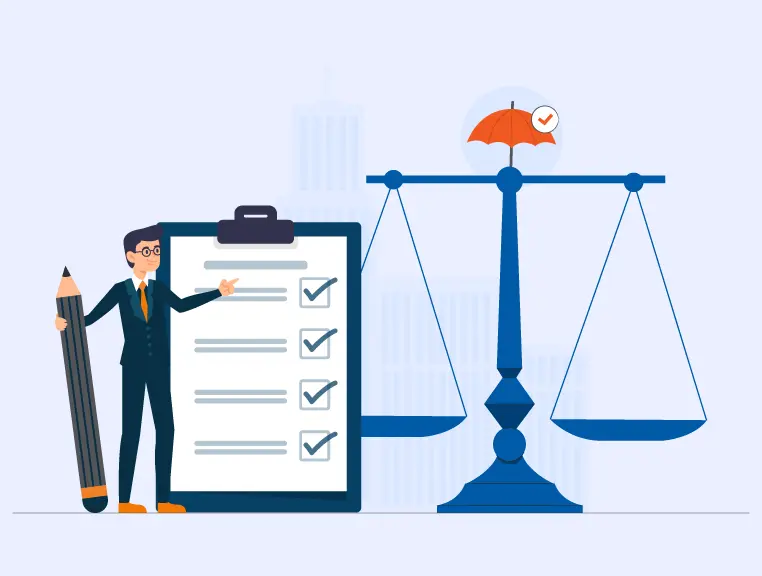When you have a commercial general liability insurance policy, you get the option to choose between two types of policies—claims made and occurrence.
Let’s understand the difference between Claims Made and Occurrence –
Coverage Starts
In case of an occurrence policy, the coverage starts the time an injury takes place during the policy term. While it is essential that the coverage must occur during the policy tenure, the policyholder can file a claim during or after the policy tenure.
However, in the case of a claims-made policy, the triggering event occurs when a claim is filed against the policyholder during the tenure of the policy. Here, the injury that gives rise to the claim may occur during or before the policy tenure, but the policyholder must make the claim while the policy is active.
Limit
Every year, occurrence limits are restored, ensuring that claims arising during one policy tenure do not diminish the available limits to cover claims arising in other years.
In claims-made coverage, the limit is not restored each year as it is in the occurrence coverage limit.
Benefit
The primary benefit of occurrence commercial general liability policies cover claims made is that they cover ‘long-tail’ claims, which means, it covers those claims which arise many years after the policy has expired. The policy covers claims resulting from a triggering event like treatment, damage, or injury during the policy tenure. Here, the timing of the claim doesn’t matter.
However, as stated above, claims-made policies give little or no coverage for those claims which are made after the policy ceases to exist. It poses an issue for those business owners who switch to an occurrence policy from a claims-made policy or who stop purchasing the insurance.
Affordability
Claims-made commercial liability insurance policies are cheaper than occurrence policies.
Limit
Inflation impact can make the limit on the occurrence policy insufficient to cover claims filed years after policy expiration. However, the limit on a claims-made policy is more likely to be sufficient as it covers claims filed during the current policy tenure.
Then, claims-made policies may include restrictions or exclusions which are not easy to spot. For instance, claims-made policies may have strict claim-reporting mechanisms. Furthermore, switching insurers is easier when you have coverage under an occurrence policy compared to claims-made commercial liability insurance policies.
Case: Difference Between Claims Made and Occurrence
Kavita Sharma owns a coffee shop. One day, a customer named, Rahul slipped and fell in Kavita’s café. When the waiter came forward to help, Rahul said he was alright and left the coffee shop. Eight months later, Rahul sued Kavita for bodily injury and sent her a legal notice.
Read More: Who is an Insured under Commercial General Liability Insurance?
Rahul’s accident happened on October 3, 2015. The coffee shop had a commercial general liability insurance from 1st January 2015 to 31st December 2015, covering the accident. When the policy expired, Kavita replaced it with another commercial general liability insurance that started on 1st January 2016. Kavita received Rahul’s lawsuit on March 14th, 2016. Which policy would be applicable?
If Kavita had purchased an occurrence policy, that policy, which was in effect when the injury happened, would cover the claim. Rahul’s injury took place when Kavita’s first policy was in effect, i.e., between January 2015 to 31st December 2015; therefore, the first policy would settle the claim accordingly.
However, here the answer would be different if Kavita had purchased a claims-made commercial general liability insurance policy.
Here, Kavita’s first policy would not be applicable because she received the claim after her first policy expired. Since the policyholder filed the claim during the tenure of the second policy, the second policy would be applicable in this case.
About The Author
Rajesh Mehta
MBA Finance
Rajesh has become a distinguished expert in liability insurance with over 8 years of extensive experience in the insurance industry. As a dedicated writer for SecureNow, he crafts insightful and informative blogs and articles that help businesses and individuals understand the nuances of liability insurance, from policy details to industry trends. Throughout his career, Rajesh has developed a profound knowledge of various types of liability coverage, including professional, general, and product liability insurance. Their expertise enables them to break down complex topics into accessible content, making it easier for readers to make informed decisions about their insurance needs.




